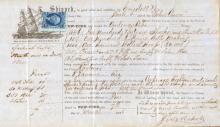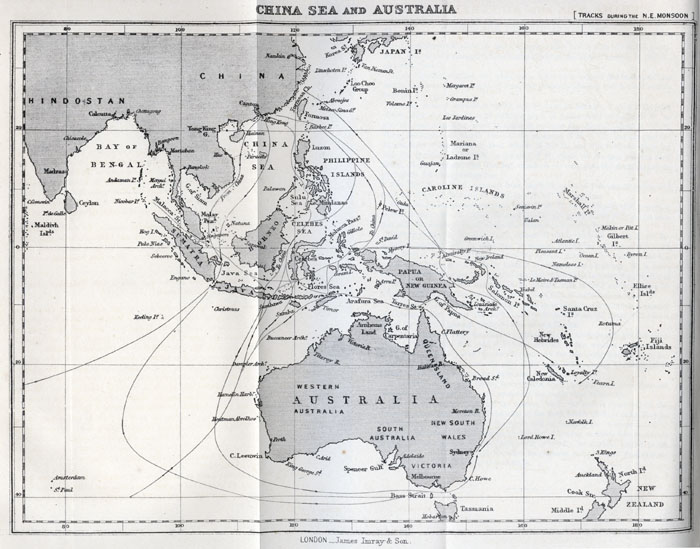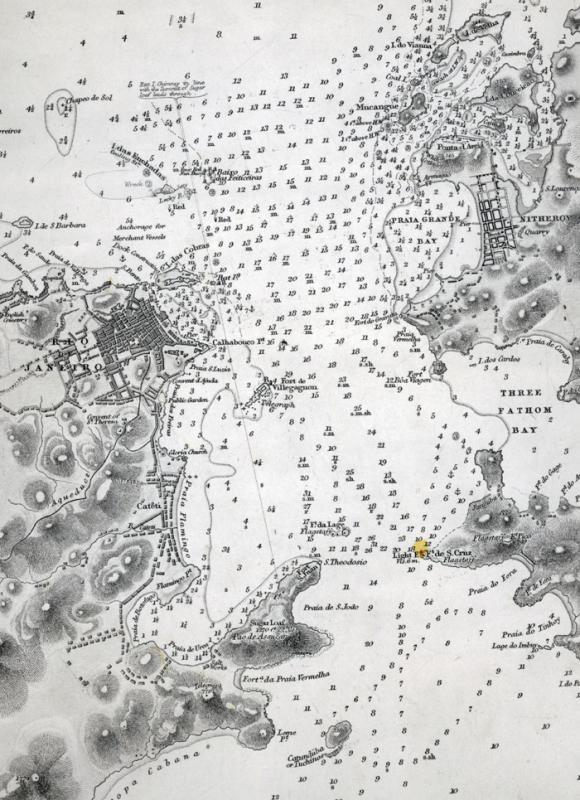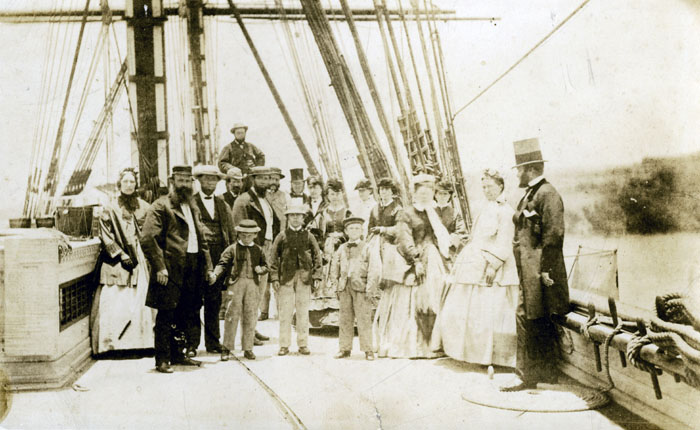Voyages and Ports
Life at sea varied depending on the type of vessel, the captainCaptain
The chief officer in charge of all aspects of a vessel. Also known as the master., and the destination and route. Sailing a schooner from Penobscot Bay to New York might only take a few days, depending on the wind and weather. A voyage to China by way of California or Liverpool could take two or three years.
England and France were the United States’ primary nineteenth century trading partners. U.S. ships sailed to Liverpool, London, Le Havre, and Bordeaux, as well as Hamburg, Germany, and the Mediterranean. Sailing to Europe took advantage of the prevailing westerly winds and the Gulf StreamGulf Stream
A warm ocean current flowing north from the Gulf of Mexico, along the east coast of the U.S., to the southeast coast of Newfoundland, where it forms the western edge of the North Atlantic Current.
Read more current, and might take three weeks. Returning to the United States took much longer and was more difficult. Vessels often had to detour north or south for more favorable wind and current. Millions of immigrants from Europe took this route to New York.
Cuba was a major U.S. trading partner in the nineteenth century (third after England and France.) The Bill of LadingBill of Lading
A document issued by a carrier, such as a ship's master, acknowledging that certain goods have been taken on board for delivery to a specific person or place. from the John Carver shows products shipped to Cuba.
Ships from the East Coast sailed to the Pacific Northwest for furs and to the Southwest for hides. A trip to California could easily take six months, and even the fastest clipper ships required about four months. Cape Horn, at the southern tip of South America, was known for rough seas and fierce storms. Here the wind comes from the west, against the direction of the ship. Rounding the Horn might take up to two months.
After the Civil War, more Maine ships began to sail to China, Australia, and Japan from New York and other major cities. These ships often went by way of the Cape of Good Hope, at the southern tip of Africa, following the prevailing westerly winds as long as possible before heading northeast towards Java and the Strait of Sunda. Captains chose their final route to China based on the monsoonMonsoon
The seasonal winds of the Indian Ocean and southeast Asia, blowing from the southwest in summer and the northeast in winter. season.
Trade with South America grew more important after the Civil War. BarksBark
A sailing vessel with three masts; square-rigged on the fore and main masts and fore-and-aft rigged on the mizzen. or barkentinesBarkentine
A sailing vessel with three masts; square-rigged on the fore mast and fore-and-aft on the main and mizzen masts. out of Portland or Boston carried lumber or ice to Buenos AiresBuenos Ayres Buenos Aires
The capital and largest city in Argentina. and RosarioRosario
A large city in Argentina, about 190 miles northwest of Buenos Aires., returning with wool for New England’s mills or hides for Massachusetts shoe factories. In any foreign port, the captain checked in with the consulateConsulate consul
The offices of the consul, an official appointed to look after the commercial interests and welfare of his country's citizens in a foreign country., cleared any customsCustoms
Duties, tolls, or imposts imposed by the sovereign law of a country on imports or exports., paid port dutiesDuty
A tax on imported goods., and arranged for discharging the ship’s cargo and finding and loading a return cargo. He also sent and picked up ship’s mail. A ship might be in port for a month or two, providing the captain, his family, and the crew an opportunity to tour the city and surrounding countryside. Since so many sailing ship captains were from Maine, they frequently met friends from home in faraway ports.





